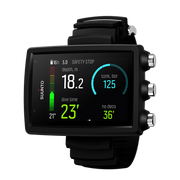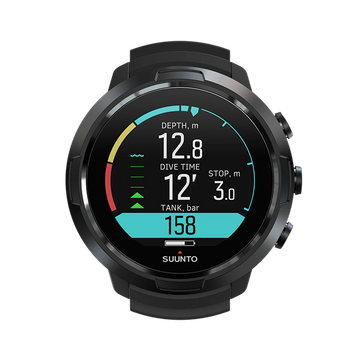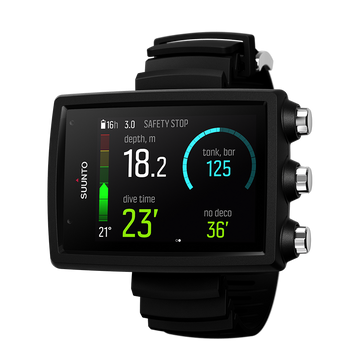

Suunto Blog
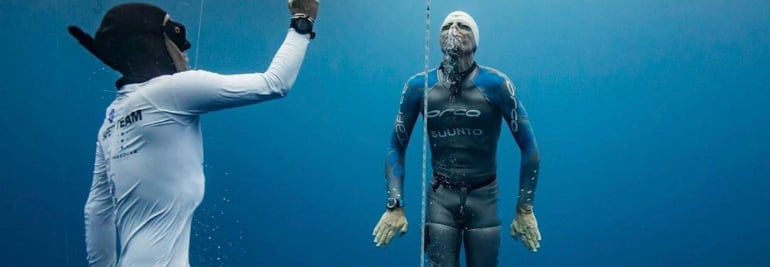
The Lowdown: CMAS 4th Outdoor Freediving World Championships 2019
On the white sun drenched shores of Roatan Island the gentle sound of the Caribbean Sea’s crystal clear water tentatively exploring the sand is lost behind the dissonance of diving activity coming from a dive platform located not far from the beach.
Divers are descending, safety protocols are being fine tuned, Alex St-Jean the official event photographer is testing his underwater camera equipment while the final training rehearsals are being observed in preparation for the CMAS World Championships that fin-kick off with an almighty duck dive on 6thAugust 2019 lasting five days. The event has been organized by Esteban Darhanpé at the Roatan Freediving School and Training Centre.
Chilling in the warm waters of the Caribbean Sea, Roatan Island is situated alongside a part of the 1000km of Mesoamerica Barrier Reef, the second largest reef system in the world.
The best of the best from around the globe are gathered to compete at the event. They compete not only to win but to be to a part of the freediving community.
A common misapprehension of freediving is that it is all about gaining the depth and in competitions this may be the case. Competition diving and its many disciplines are only one aspect of the sport. For most freedivers, the sport is just about hanging out with friends and exploring the underwater world.
“To the observer, freediving is all about serenity and calmness – a peaceful interaction with the underwater world. It is exactly all these things, which is why competition freediving presents such a unique challenge.” says Will Trubridge, Suunto Ambassador and World Champion.
“The conditions of a competition are slightly different to a world record attempt. In a competition you have an official pre-set time and there's a lot more people around – spectators and media. It's not as controllable as with a world record attempt,” says Will.
William Trubridge captured by photographer and freediver Alex St-Jean ©
Organizations
CMAS- The World Underwater Federation/Confédération Mondiale des Activités Subaquatiques founded in 1959 and is an international federation that organises underwater activities and events and is amongst the leaders in the scientific and technical research and development. It also acts as a training standards agency in snorkel and scuba training.
AIDA- International Association for the development of Apnea was created in 1992 after the film release for Big Blue. The rise in training freedivers and record breakers was developing at a vast rate and the AIDA was founded to keep track on the growing interests. The largest organization world wide of freediving event organizers, it also actively participates in scientific and technical research and development to help the world see freediving not as a thrill seekers sport, AIDA wants the recognition that “freediving is safe, fun, challenging and a fantastic blend of inner peace, concentration, technique, training, friends and team work”.
Disciplines
CNF- constant weight no fins is often talked about as being the purest form of freediving unassisted
CWT- Constant Weight with Fins discipline means the diver can wear fins, however they are only allowed to touch the rope to stop their descent and start their ascent. This discipline tends to give the deepest performances.
CWB- Constant Weight with Bi Fins. More monofins than you can shake a pair of bi fins at.
FIM- Free Immersion is a more relaxed dive where the diver can use the rope to pull themselves along using the rope, the diver is not allowed to wear fins on the dive.
Competition Terms
Safety Teams/Safety Diver- the Dive Safety Team is headed up by Italian Freediver Marco Cosentino and is currently holding the position of Chief of AIDA Safety Committee. He has a team of twelve safety divers there for support including Suunto Ambassador Sofia Gomez’s coach, freediver Johnathan Sunnex aka Johnny Deep.
Announced Dive Time- the official target time the diver will take to complete the dive, must be announced pre-dive. “You announce your dive on that day. If something goes wrong, then you don't have a second chance. It creates more of an element of chance. There is also a lot of sleuthing and spying to find out what other freedivers have done in their training to gauge how they're performing, and using that information to make pronouncements.” Says William Trubridge.
Official TOP- Time of Performance, as during the competition the organisers will be sticking to strict scheduling and the divers are assigned a time the dive must commence so all pre-dive preparation must be completed by the official TOP.
Duck Dive- the way a free diver ‘enters’ the water is by this type of dive as it gets the diver in a good position for descending and helps them along to few meters deep very quickly.
Freefall- once the diver reaches the point of negative buoyancy on their descent and begins to sink in a state of complete relaxation without finning down. This year we have spotted the athletes with strings tied around their thighs, Will Trubridge uses his to slide his thumbs in place so his arms stay positioned during freefall in order to conserve every bit of energy. It is this part of the dive that can induce the most pleasant feelings. Many freedivers feel euphoric as they enter an almost trance-like state.
Tag- a marker the diver must grab and bring back up to the surface when competing in depth competitions.
PB- personal best is the athletes, longest or deepest dive they have achieved. Can also be measured by distance.
Surface Protocol- the sequence a freediver must completion upon reaching the surface after a dive in a competition to convince the judges that the diver is lucid and not unconscious. The diver must face the judge’s direction remove googles and nose clip, give the OK signal and say in English “I am OK”/I’m OK” with a 15 second time limit.
Hypoxic- where the body is in a state of inadequate oxygen at tissue level. If the diver doesn’t get to the surface with enough oxygen to be lucid enough to complete the surface protocol they will be disqualified.
Cards- white, yellow or red. The judges will show a card at the end of each competition dive to signal whether the diver has had a fine performance with no penalties, yellow means the dive was completed with penalties and red signals disqualification from the dive.
World Championships Schedule
AUGUST 6th OPENING CEREMONY
Much like the opening ceremony of the Olympics we hope to see the atheletes parading around Roatan wielding flags, looking strong and generally building the hype, however it may be more of a technical meeting!
AUGUST 7th CNF COMPETITION DAY
Suunto Ambassador William Trubridge holds the world record in this natural discipline. Will set a new world record in freediving by diving to 101m with no fins in Dean's Blue Hole in the Bahamas. The new world record was set mere three days after he established an astounding new world record dive of one hectometre. Will's record-setting and mind-boggling constant no fins dive to 101 meters took 4 minutes and :08 seconds to complete.
Watch it here:
AUGUST 8th CWT COMPETITION DAY
Constant weight APNEA. This discipline means the diver can wear fins, however they are only allowed to touch the rope to stop their descent and start their ascent.
AUGUST 9th REST DAY
Rest day for re-ups on oxygen and rest.
AUGUST 10th CWB COMPETITION DAY
More monofins than you can shake a pair of bi fins at.
AUGUST 11th FIM COMPETITION DAY / AWARD CEREMONY / CLOSING PARTY
The winners get to take home a magnificent Suunto D5 dive computer and also collect a cash prize.
Sofía Gómez Uribe taken by freediver Johnny Sunnex @johnnydeep110 ©
Follow on Instagram @Suunto Dive to keep up with Sofía Gomez Uribe as she takes over for all latest news from the dvie platform.
Click here to see the official Facebook page for the competition.
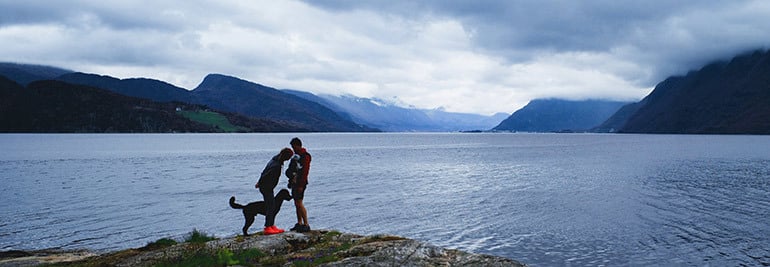
Becoming a mother and staying in love with the mountains
New roles for everyone: As Emelie heads out training, Kilian stays home with Maj.
After nine months of pregnancy, resting and recovering after birth, Suunto ambassador Emelie Forsberg is training again in the mountains and fjords of Norway where she and her partner Kilian Jornet live a life filled with adventure.
True to her background in seasonal farming, gardening and eating, Emelie understands well there is a season for everything, and is taking her time to come back to elite mountain running and skiing form.
“I don’t push my boundaries because I prefer to take small steps and to do it really healthy and slow,” she says. “That might mean my way back will be longer, but that’s who I am. I would regret it so much if I took too big a step and got injured. I want to take things slow.”
Watch below and see how Emelie is balancing the joy of being a new mum with finding her legs again as one of the best mountain athletes on the planet.
WATCH "BEING AN ATHLETE AND A NEW MUM"
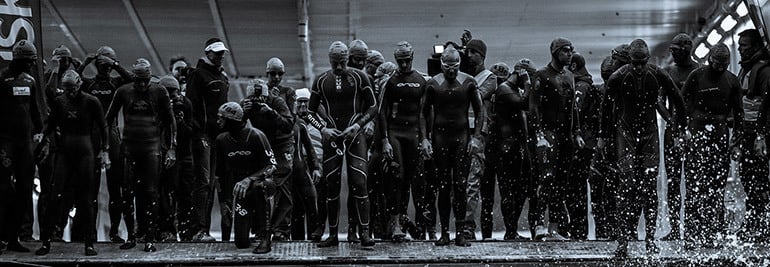
Watch Norseman extreme triathlon live!
Tune into watch one of the world's toughest long-distance triathlons – the notorious Isklar Norseman – live this Saturday. The race will be split into five live episodes, capturing key sections where the action is at it's most intense.
Competing in Norseman requires maximum mental toughness and takes human physiology to it's limits. When competitors cross the finish line on Gaustatoppen's summit, they will have completed a 3,8km swim, 180km bike ride and a marathon – and climbed 5000 m of altitude along the way!
Unlike traditional triathlons, Norseman is a point-to-point competition. From Eidfjord on the west coast to the finish on Gaustatoppen in the east, Norseman takes competitors through some of the most amazing landscapes Norway has to offer.
Click to read about the origins of the extreme Norseman!
Watch Norseman live on Saturday, August 3. The race starts at 5am (CET).
The Norseman live broadcast is split into five major episodes:Episode 1: 06:30 to 07:30 Live from T1 and recap from the swim.Episode 2: 08:30 to 09:30 Live from Dyranut and recap from the swim and the first ascent.Episode 3: 12:00 to 13:00 Live from T2 and recap from the swim and the bike.Episode 4: 15:00 to 16:00 Live from the mountain climb and recap from the the race so far.Episode 5: 17:00 to 18:30 Live from the mountain top. Looking at the winners, talking to them. More finishers.
Main image © Snorre Veggan / nxtri.com

Is Isklar Norseman the hardest triathlon on the planet?
On Saturday August 3 at 5 AM (CET) the 17 th edition of Isklar Norseman Xtreme triathlon begins when 250 athletes from all over the world jump off the ferry in Hardangerfjorden. Learn about this epic race's beginnings from the guy who started it all: Isklar Norseman founder Hårek Stranheim .
Let’s start simple: why?
Hårek: In 2000 only nine Norwegians had completed a long distance triathlon in Norway. I discussed with my good friend Bent what could be done to popularize this beautiful sport here in Norway. Bent wanted to start a triathlon club and he went and founded Oslofjord Triatlon Club. I wanted to organize and create a unique competition. I described the idea in an e-mail to Bent later the same day:
“I want to create a completely different race, make it a journey through the most beautiful nature of Norway, let the experience be more important than the finish time, and let the participants share their experience with family and friends, who will be their support. Let the race end on top of a mountain, to make it the hardest long-distance triathlon on earth. Since Norway has almost no active triathletes, we need to create a race that first attracts German triathletes, who can let the Norwegians discover that they are missing out on a great opportunity to have fun.”
Another purpose with Isklar Norseman was that I was always ending up last among the Norwegian triathletes; I simply wanted to recruit more lantern rouges into the sport. Bent did not fancy my idea too much. “I would never be able to finish this race”, he said.
Norseman’s bike leg crosses Hardangervidda, the largest mountain plateau in Northern Europe. (Image by Kyle Meyr / nxtri.com)
Tell us about the first Isklar Norseman.
Hårek: The pioneer edition was a great experience. When we finished the final route decisions for the 3,8 km swim, 180.6 km bike and 42,2 km run it was a beautiful A to B course. The swim was in the Hardangerfjord in Eidfjord, the bike segment was crossing the largest mountain plateau in Northern Europe, Hardangervidda, and the final run ended at the majestic Mt. Gaustatoppen (1883 m) in Rjukan. I believe the communities of Eidfjord and Rjukan thought we were crazy, but they gave us wonderful support and we knew it was something great going on.
WATCH NORSEMAN LIVE ON AUGUST 3
How many people did the first race?
Hårek: 21 competitors showed up in Eidfjord July 19th 2003 and to their astonishment, I was also on the start line together with the rest of the organizing committee, so our wives and families had to organize the race, to their big surprise. 19 competitors reached the summit of Mt. Gaustatoppen later that day.
When the competitors cross the finish line on Gaustatoppen they will have climbed 5000 m. (Image by Agurtxane Concellon/ nxtri.com)
Why must you provide your own support for Isklar Norseman?
Hårek: The support aspect of Norseman is to create a race that competitors must share with their family or friends. They have to plan the race together and share the entire day together. Instead of excluding family and friends in the preparations for the race, the competitors must include them. It's hard work to be support during Isklar Norseman, but it is a great moment for both support and competitor to share all ups and downs in a long distance triathlon. The support teams put a lot of energy, and it's not unusual that they forget to eat race day – they are completely into their mission of getting their competitor to the finish line.
What is your best memory from the years with Isklar Norseman?
Hårek: There is a bunch of good memories from Isklar Norseman. The joy and excitement in Eidfjord before the event always gives me goosebumps. The electric atmosphere the evening before all the competitors jump into the water is really something all triathletes should experience once in their lifetime. But the best memory is probably to sit on a rock at the finish line at Mt. Gaustatoppen after a long day, with my support, looking at the course and scenery you have conquered in one day.
Follow the 250 participants live on suunto.com Saturday August 3th, 5 AM (CET).
FACTS ABOUT ISKLAR NORSEMAN XTREME TRIATHLON:
The race finishes on 1883m high Gaustatoppen, the highest mountain in Telemark county in Norway. (Image by Thomas Dahlset / nxtri.com)
Norseman is a long distance triathlon with a 3800m swim, 180km of cycling and a 42km run. When athletes cross the finish line, they have climbed 5000m of altitude.
Unlike a traditional triathlon, Norseman is a point-to-point competition. From Eidfjord on the west coast to the finish on Gausta peak in the east, Norseman takes competitors through the most amazing landscape Norway has to offer.
Every year race organizers hand out 250 slots in Norseman's famous lottery. Today the race is a proud host to athletes of all ages from all over the world. World champions like Björn Andersson, Jonas Colting and Tim DeBoom are among those who have made it to the top of Mt. Gaustatoppen – and they have all left with the same trophy: a black t-shirt. Main image by Kyle Meyr /nxtri.com

5 inspiring coral reef restoration projects
Plucky divers, scientists and ocean conservationists are doing all they can to save coral reefs from the effects of the climate crisis, overfishing and pollution. Here are five inspiring restoration projects to give you hope.
Diving rich, rainbow colored coral reefs is every diver’s dream. We travel the planet to experience them, leaving us in awe of how staggeringly beautiful they are. Imagining our oceans without them is simply heartbreaking.
Yet, mass coral bleaching events – due to a rise in global surface temperature – could cause all 29 reef containing World Heritage sites to cease to exist by the end of the century. The stakes have never been higher.
To stop this from happening, divers, scientists and ocean conservationists are teaming up to find solutions. We look at five inspiring initiatives to save the coral, and also what you can do to help.
Reef Rescuers, Cousin Island, Seychelles
In a way, every diver should identify as a reef rescuer, and do what he or she can, even if only make donations, to support one of these initiatives. Starting in 2010, this huge and impressive restoration project has raised 40,000 corals in underwater nurseries, with 24,000 of these being successfully transplanted onto reefs, covering an area of a football field. The project utilised the coral gardening technique of retrieving fragments of healthy coral, growing it in protected nurseries and then transplanting it onto degraded reef to help rejuvenate it. Based on its learning, the project created a Coral Reef Restoration Toolkit for other initiatives to benefit from.
Secore Coral, Yucatan Peninsula, Mexico
Starting in 2015, this pilot project researched and tested new techniques to use coral grown in land-based or ocean nurseries for restoration, waiting until they are old enough to plant out on reefs where they are then monitored. This inspiring documentary below shows what’s possible.
Pur Coral, Indonesia
Coral reefs across the world need all the help they can get, including financial support from the corporate sector for restoration projects. French dermo-cosmetics brand EAU THERMALE AVÈNE partnered with Pur Projet to create Pur Coral, a project to preserve and regenerate marine ecosystems in Pejarakan, Bali. The corals had been destroyed mostly by cyanide and dynamite fishing, which are now banned there. Since its start in 2016, the project immersed 24 artificial reef structures underwater, then planted 1855 corals, from more than 15 species, on them. For several years Avène has engaged in an eco-responsible initiative called "Skin Protect Ocean Respect" to raise awareness about the impact of sun protection on the environment, and particularly on the marine life and corals. Avène has also been a leader in redesigning its sunscreen product range, minimizing the impact on the environment without compromising on optimal UVB-UVA protection for the skin.
RangerBot, Great Barrier Reef, Australia
Like a Swiss army knife, a state-of-the-art robot reef protector developed by researchers at Queensland University of Technology in Australia – RangerBot – has a number of functions, all designed to protect one of the wonders of the world, the Great Barrier Reef. It’s first function is to search and destroy; its incredible cameras identify invasive Crown-of-Thorns Starfish and injects them with a lethal dose of poison. It also monitors the health of the coral and water quality. It can also map vast areas underwater at scales not previously possible.
World’s largest 3D printed reef, MARS, Summer Island, Maldives
The Modular Artificial Reef Structure (MARS) is an ongoing project developed by industrial designer Alex Goad. It utilises 3D printing to provide a rigid skeleton on which corals can be implanted and grown. In August 2018, they submerged the first reef off the coast of Summer Island, in an area where there has never been a coral reef, and where locals have been growing corals. Alex says the ease, affordability, flexibility of 3D printing can play an amazing role in preserving coral around the world.
6 ways you can make a small difference
Conscious travel
Air and vehicle travel are major contributors to the rising greenhouse emissions driving the climate crisis. Consider trying to reduce both. For example, use public transport or ride a bicycle whenever you can. And when you do fly, offset the carbon emissions from your flight by using a carbon calculator, and compensating a green cause of your choice.
Hands off
When you’re out diving, don’t touch coral or any marine animals. Keep a respectful distance. Don’t pursue animals to get that trophy photo. And don’t collect shells and so forth as souvenirs – remember that hundreds of people dive the same site, and if every diver took a souvenir it would create a big problem.
Use eco-friendly sunscreen
Use sunscreens based on eco-designed, biodegradable formulas. Avoid products that have the following ingredients in them: Octocrylène, Benzophenone, Methoxycinnamate. Take a look at Avène’s sunscreen range – they are brand of choice for divers at Suunto head office.
Be a tidy diver
Single use plastics really are an abomination. Divers should lead the way and quit using them. Be sure to clean up any plastic trash after your dive when you’re back on land.
Start “strawkling”
Strawkling is a new recreation that combines snorkeling and collecting litter. Take a net-cloth bag on your next dive, and collect any plastic litter you find. Imagine if we all did this!
Change your business practices
If you own, manage or work for an organisation in the global dive community, join Suunto in getting onboard with Mission 2020 and changing your business practices so they help protect and preserve our oceans for the future.
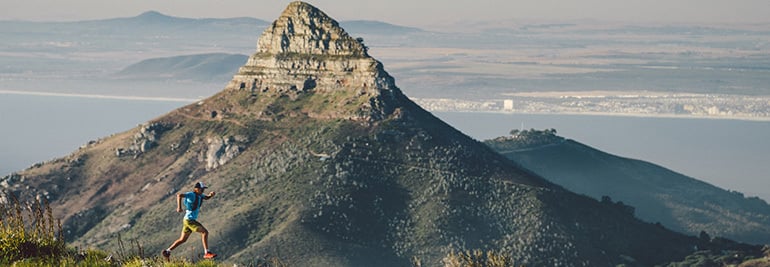
Ryan Sandes’s new 13 Peaks Challenge and the joy of backyard adventure
Ultra running champ Ryan Sandes showcases his home training trails in stunning Cape Town, South Africa by creating a challenging new adventure route.
© Jared Paisley
The summit of Table Mountain towers 1054 m above Cape Town below. The keystone of Table Mountain National Park, the peak is famous for its biodiversity and incredible panoramic views.
This is Suunto ambassador Ryan Sandes’s home training ground. It’s where he prepares for the ultra marathons he races in around the world. He’s know this terrain like the back of his hand.
“Table Mountain is one of the few places where you can go from the city to the top of a mountain in under an hour,” Ryan says. “There’s something really magical about it and the whole Cape Peninsula – the combination of really technical trails, beautiful landscapes and ocean views.”
© Jared Paisley
After running in locations all over the world – Antarctica, the Gobi Desert, the European Alps, the Himalayas, and the jungle of Central America – Ryan felt called to explore his own home turf more fully. “We so often search far and wide for adventure, when epic backyard adventures are waiting right on our doorstep,” Ryan says. “It doesn’t take a lot to create them; it’s just using your imagination a little bit, and going out and having a good time.
“There is so much potential for backyard adventures, whether it involves surfing, a long distance swim, a kayak paddle, or doing a crazy mountain bike. There’s just so much out there. Even if you live in a massive city, you can still create a fun backyard adventure. The opportunities are endless.”
The 13 Peaks Challenge all started with Ryan sketching a route on a notepad. With pen and pad, he linked up 13 peaks in the park to create a backyard adventure for locals and tourists alike. Then he convinced a friend to run it with him. “I told him it would only be 40 or 50 km,” Ryan says. “It ended up being an epic adventure, over 108 km!”
© Jared Paisley
With that huge day out, the 13 Peaks Challenge was born. The route is 108 km, and includes 6500 m of vertical gain. It can be done in 24 hours, 48 hours or as a multi day challenge. About 20 people have completed it so far. A group of runners is currently attempting to do the 13 peaks in 13 weeks.
Ryan’s friends Ryno Griesel, Ruan van der Merwe, and Jock Green hold the fastest known time (20 hours), but maybe not for long. “In some ways I’m more looking forward to giving that another go than any other races or events,” Ryan says.
People living in Cape Town have caught on to the challenge more quickly than Ryan expected. Enthusiasts are making merchandise for finishers. The challenge is collaborating with charity the Southern Lodestar Foundation to help feed schools in the area. And the people who have completed it are helping those undertaking it. “I’ve been blown away by how many people have become passionate about it,” Ryan says. “It’s become really community orientated. It’s creating camaraderie.”








